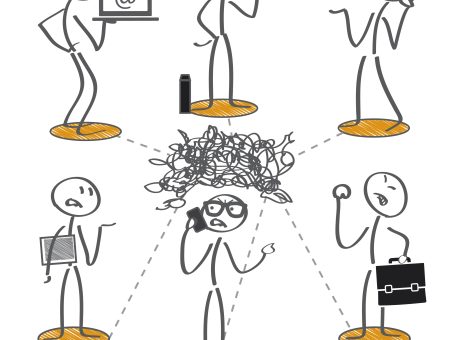The better your content, the more you’ll sell
A customer types a keyword into Google.
Boom!
Your website is the first to appear in the organic search results. Great job, SEO maven!
Now what?
Is your title tag strong or weak?
What does your description tag tell the browser as their eyes shift downwards?
Will the words you’ve used make them click their mouse or scroll down the page?
I’ve been re-reading a few excerpts from Joe Sugarman’s book The Adweek Copywriting Handbook and although direct mail in the form he used it to earn millions is, for the most part, a thing of the past, his copywriting principles are timeless. Make no mistake about it, the words you use to sell your product, whether those words are communicated in a title tag, a video script, a magazine ad or a web page, are critical. I will go so far as to say that even if you have the strongest marketing visuals of anyone in your field, if your words stink, so will your sales.
Picture this scenario
You’re on the market for a watch, which is an industry with hundreds of different choices and categories to choose from.
As you browse the first page of Google’s search results or read a few websites from the top watch brands, or watch a promotional video, what words will grip you? Which company’s content will resonate with you…and why? How will you feel when you read or hear different words describing the watches you’re interested in?
Myth: It’s all about the visuals these days, not the content
This isn’t true. While I believe it is true that, in the realm of marketing through content writing and copywriting, it is more important than ever before to be succinct, I don’t believe it is strictly visuals that do the selling. Words are essential. To convey information. To tell a story. To make the reader (who is also the buyer) feel something. To, ultimately, lead people to feel as though they want to part with their hard-earned money in order to have your product or service.
The right words are born out of an understanding for your audience
Back to my scenario and that watch you want to buy. Precisely what type of watch are you interested in?
Is it a sports watch?
A waterproof watch?
A fitness watch?
A smart watch?
A fashionable watch?
A luxury watch?
The answer to the question “what type of watch are you interested in?” is so important because it puts you, the consumer in this case, into a particular category. The wants, needs, desires and pain points of a customer on the market for a sports watch are fundamentally different from those of the customer who is looking for a luxury watch. The words, the language, the tone, the style and the message must then reflect those differences.
Now put yourself in the shoes of the company. In any piece of content you develop, there are always two critical elements to consider: the message you want to convey, and the more subliminal message actually conveyed through the language you use for delivery.
Taking it one step further, imagine you are now the copywriter for the company selling the watches. If you use the same marketing words to sell a luxury watch as you do to sell a sports watch, do you think you’ll be successful? The clear answer is “no” but then an even more important question emerges: why?
It’s 95% about them, 5% about you
Think of the way you shop these days. Picture reading an ad, or a blog, or a website. How do you feel when the company’s content encompasses a dry, uncreative, self-involved voice:
“We are….”
“Our company was founded in…”
“We’re located in…”
“Our team members are…”
“Our product does this…”
“Our services are…”
So what? How does any of this information apply to you and what you believe you need?
Now, how do you feel when you read a company’s content that sounds more like this:
“Are you looking for…?”
“Did you know…”
“Because our product is designed like this…it does this for you…”
“You are the focus of our service, and we tailor what we do to suit what you need…”
“If you’re experiencing…here’s exactly how we can help…”
“When you choose our company, you end up with this, this and this…”
In both scenarios, the same information may very well be communicated to the potential customer – but in a MUCH different way. In the first, the content sounds one-sided. In the second, the words speak directly to the person reading and revolve around him or her. They make the reader feel understood, addressed and valued. The content still conveys the important points and the reader learns about the product or service – but the key is the way in which that learning happens.
Build an experience centred on your customer
Once you establish content that speaks directly to your customer, then it’s time to take it one step further. Your readers like that the words you use mimic a personal conversation but how do those words make them feel? Is there a story you take them through? Do you prompt them with questions they’ve never thought to ask? Do you wow them with groundbreaking statistics? Are there ways to interact?
Thinking beyond your words for a moment, shift your focus to crafting creative content that gives your audience an overarching experience. Ignite emotion. Spawn fresh thoughts. Provide real value. Be grounded in genuineness and authenticity.
We often don’t remember precisely what we read in an advertisement, article, website or product package, but if the words offered something greater such as some kind of emotional connection, it’s more likely that we will remember how they made us feel. And that memory, that emotion, may just be enough to entice us to take the next step.


